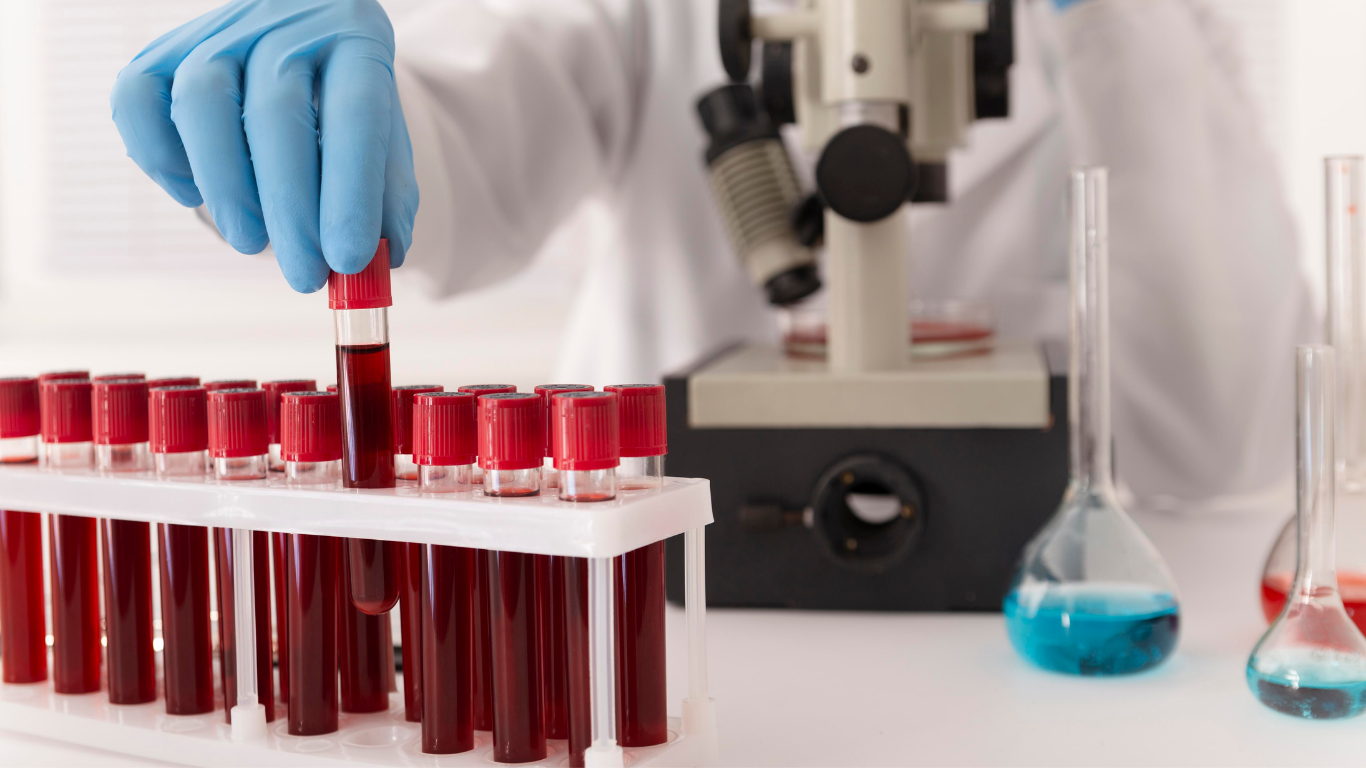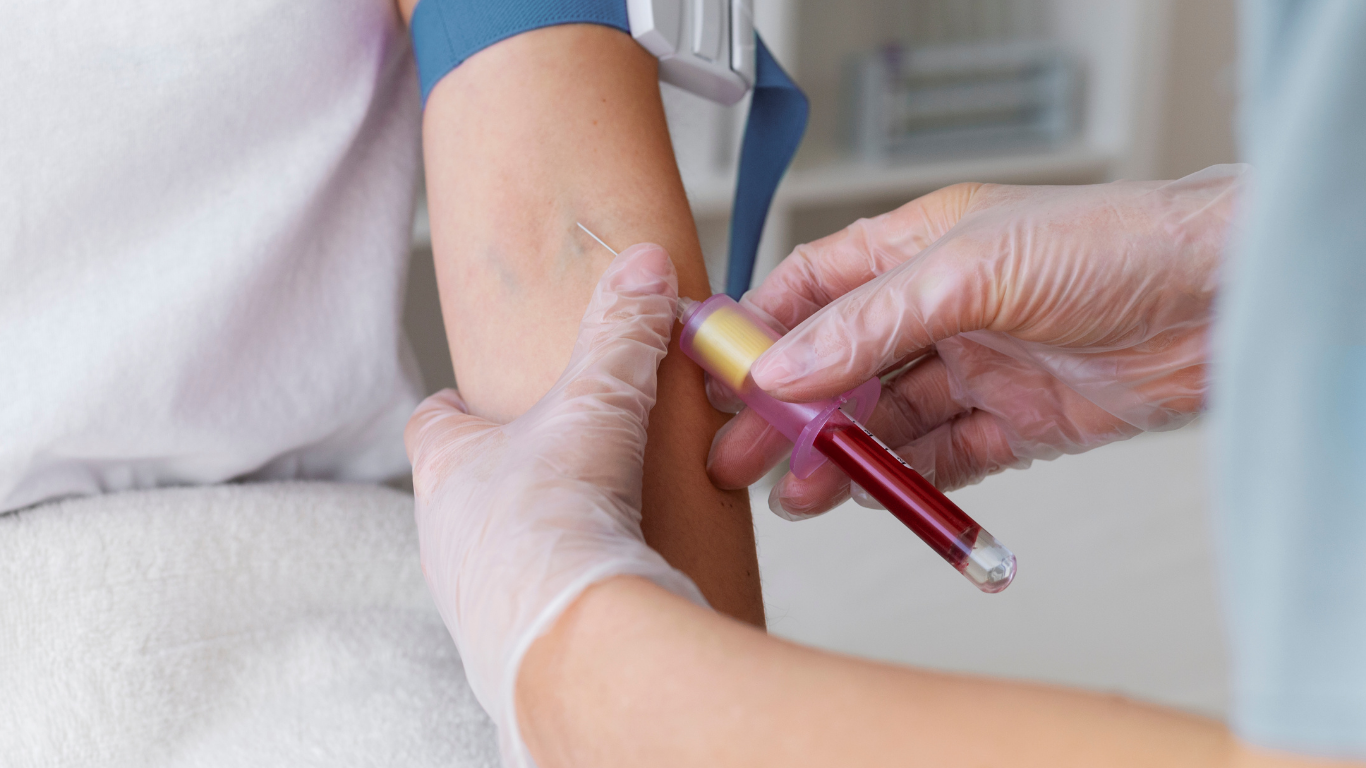Understanding Thalassemia: Symptoms, Causes, and Management Options
Understanding Thalassemia: Symptoms, Causes, and Management Options
Thalassemia is a group of inherited blood disorders characterized by the body’s inability to produce adequate amounts of hemoglobin, the protein in red blood cells responsible for carrying oxygen throughout the body.
This condition often leads to anemia, a state where the body doesn't have enough healthy red blood cells, resulting in fatigue, weakness, and other health complications. Thalassemia can range from mild to severe, depending on the type and genetic inheritance.
Understanding its symptoms, underlying causes, and the various management options available is essential for early diagnosis and effective treatment. Raising awareness about this condition can lead to better health outcomes and improved quality of life for those affected.
What is Thalassemia?
Thalassemia is an inherited blood disorder that affects the body’s ability to make healthy red blood cells and a protein called hemoglobin, which carries oxygen. People with thalassemia produce either fewer red blood cells or red cells that don’t function properly.
This causes mild or severe anemia, depending on the type. In more severe cases, individuals may need regular blood transfusions to survive.
Beta thalassemia major, Cooley's anemia, and alpha thalassemia major are among the most serious forms. Some people have mild symptoms, while others develop life-threatening complications early in life.
-
Thalassemia can be classified into alpha and beta, depending on which part of the hemoglobin molecule is affected.
-
In beta thalassemia, mutations affect the beta globin protein, while alpha thalassemia involves the alpha globin protein.
-
Thalassemia major often requires frequent blood transfusions to maintain life and health.
-
People with thalassemia may experience fatigue, pale skin, slowed growth in children, and an enlarged spleen.
-
Fewer healthy red blood cells in the bloodstream mean the body receives less oxygen, leading to symptoms of severe anemia.
-
In thalassemia intermedia, symptoms are milder than in thalassemia major, and blood transfusions are sometimes needed.
-
Carriers with a thalassemia trait (e.g., alpha thalassemia trait or beta thalassemia minor) usually have few or no symptoms but can pass the disorder to their children.
Causes of Thalassemia
Thalassemia is caused by mutated genes that affect how the body makes hemoglobin. These gene mutations are passed from parents to children. A child must inherit the faulty gene from one or both parents.
If only one gene is inherited, the person is a carrier or has a thalassemia trait. If both genes are faulty, the child may have severe thalassemia.
The severity depends on how many genes are affected and which globin protein (alpha or beta) is involved. Genetic and routine blood tests can help diagnose thalassemia, even before symptoms appear.
Gene Mutations and Inheritance
Each person has two sets of hemoglobin genes—one from each parent. If both parents carry faulty genes, the child may develop thalassemia major. However, if only one gene is passed down, the child may not show symptoms but can still pass it on.
Imagine both parents unaware they are carriers. Should they undergo genetic testing before having children? It might prevent the passing of severe forms of thalassemia.
Type of Thalassemia Inherited
Alpha and beta thalassemia are caused by different gene defects. In alpha thalassemia, the number of faulty genes (one to four) determines the severity. Alpha thalassemia major, where all four genes are faulty, often causes stillbirth.
On the other hand, beta thalassemia major leads to lifelong blood transfusions. Symptoms are very mild if only one gene is affected, like in beta-thalassemia minor.
Impact on Red Blood Cells
These faulty genes reduce the body's ability to produce healthy red blood cells. The body becomes oxygen-starved with fewer red cells or red cells that break easily.

Think about a child struggling with energy during simple play or frequent infections. Could it be more than just low immunity? It could be moderate to severe anemia caused by an inherited condition.
Geographic and Ethnic Factors
Thalassemia is more common in people from the Mediterranean, Middle East, Africa, and Southeast Asia.
If a family comes from these regions and has a history of anemia or frequent fatigue, they should consider blood tests to check for thalassemia syndromes. It's not just about geography—it’s about genetics that travel through generations.
Bone Marrow and Blood Cell Production
When the body can’t make enough healthy red blood cells, it tries to compensate by expanding the bone marrow. This can lead to bone deformities, especially in children.
In cases where blood transfusions aren’t enough, a bone marrow transplant or stem cell transplant may be the only long-term solution. But these come with risks—would the potential benefits outweigh those?
Symptoms and Signs of Thalassemia
Thalassemia symptoms are not always obvious at birth. Some people live with mild symptoms for years, while others experience serious health issues in early childhood. It all depends on the type—alpha thalassemia, beta thalassemia, or intermedia, and how many mutated genes are present.
In more severe forms, like beta thalassemia major, the body cannot make enough healthy red blood cells, leading to severe anemia. Children with thalassemia major often require regular blood transfusions to survive. Early signs might seem like everyday tiredness or slow growth, but they may point to an inherited blood disorder that needs close monitoring.
Fatigue and Weakness
People with thalassemia often feel tired, even after rest. This happens because their red blood cells can't carry enough oxygen to the tissues. A child might struggle with basic activities like walking upstairs or playing.
Are teachers noticing poor focus in class? It might not be laziness but a symptom of severe anemia. Fatigue doesn’t go away with sleep because the body lacks healthy blood cells. It’s especially noticeable in beta-thalassemia major, where frequent blood transfusions are required just to keep energy levels close to normal.
Pale or Yellowish Skin
Paleness comes from fewer red blood cells. Some people with thalassemia symptoms also develop a yellow tint due to the rapid breakdown of blood cells. Parents might first notice this yellowish hue around a child’s eyes or nails.
It can look like jaundice but often lasts longer and doesn’t follow typical infection patterns. Doctors usually order blood tests to explore inherited blood disorders when combined with fatigue. If these signs appear in a child of Mediterranean, Middle Eastern, or South Asian descent, alpha or beta thalassemia could be the cause.
Delayed Growth and Development
Thalassemia affects how the body uses energy. Children may grow slower and reach puberty later. The body spends most of its energy trying to produce more red blood cells, often unsuccessfully.
If a child appears smaller than classmates or lags in hitting physical milestones, could it be due to thalassemia major or thalassemia intermedia? These delays are not just cosmetic—they hint at poor oxygen delivery to tissues and may require regular blood transfusions or, in some cases, a bone marrow transplant.
Bone Deformities
The body expands the bone marrow, especially in the skull and facial bones, to produce more red blood cells. In some children with beta-thalassemia major, this leads to a broad forehead, protruding cheekbones, and a flattened nose.
These changes can start early and become permanent. It’s not just about appearance—these are signs of the body overworking to compensate for severe anemia. Parents might ask, “Why does my child’s face look different?” The answer may lie in their blood cells, not their nutrition.
Enlarged Spleen and Liver
The spleen filters damaged blood cells. When there are too many of them, like in severe thalassemia, the spleen grows bigger to keep up. This can cause pain or a feeling of fullness in the abdomen.
It also worsens anemia because the enlarged spleen destroys red blood cells faster than usual. In some cases, surgery is needed to remove it. Liver enlargement may follow due to iron overload from frequent blood transfusions. Doctors often use iron chelation therapy to manage this condition and reduce the risk of organ damage.
Diagnosis and Testing of Thalassemia
Identifying thalassemia early is important, especially for children who may need lifelong treatment. Diagnosis usually begins with symptoms like fatigue, pale skin, or slow growth. If a family history of thalassemia or anemia exists, a routine blood test can reveal irregularities in red blood cells.

Doctors may use peripheral blood smears, genetic testing, and hemoglobin electrophoresis for a more detailed diagnosis. These tests help determine the type alpha thalassemia, beta thalassemia, or a thalassemia trait. Early diagnosis allows doctors to plan treatments like regular blood transfusions, chelation therapy, or even a bone marrow transplant.
Complete Blood Count (CBC)
This is usually the first test done when anemia is suspected. A CBC shows low hemoglobin and small, pale red blood cells. But a CBC alone can't diagnose thalassemia.
If the red cells are fewer but more numerous than expected for typical iron-deficiency anemia, the doctor might ask, "Is it something genetic?" This test is useful as a first clue, but it needs to be followed by more specific ones, especially in children with fatigue and a family history of anemia.
Peripheral Blood Smear
In this test, a drop of blood is examined under a microscope. People with thalassemia often have abnormally shaped red blood cells. Target cells (cells that look like bullseyes) or nucleated red cells can be a sign of moderate to severe forms like thalassemia intermedia or beta thalassemia major.
This test helps distinguish between iron-deficiency anemia and an inherited blood disorder. If the blood smear shows uneven shapes and sizes, the bone marrow is under stress.
Hemoglobin Electrophoresis
This test measures the types of hemoglobin in the blood. It’s especially useful in detecting beta thalassemia or thalassemia minor. A person with beta thalassemia minor might have more fetal hemoglobin or less beta globin than usual.
Why does this matter? Because it tells us whether the body is producing the right kind of hemoglobin or just trying to compensate. If a doctor suspects Cooley's anemia, this test can confirm it.
Genetic Testing
This is the only way to confirm exactly which mutated genes are involved in thalassemia syndromes. It can also identify alpha thalassemia trait or alpha thalassemia minor, which may not show up clearly in blood smears.
Couples from high-risk ethnic groups often undergo this test before having children. If both carry mutations, they risk passing on severe thalassemia. The test doesn’t just confirm diagnosis—it can guide family planning decisions.
Iron Studies
Since thalassemia and iron-deficiency anemia look similar, iron studies help differentiate them. People with thalassemia usually have normal or high iron levels. Giving them iron supplements without testing can worsen iron overload.
This can damage the liver, heart, and endocrine glands. So doctors often check serum ferritin and transferrin saturation. These levels help decide if iron chelation therapy is needed—especially in people getting lifelong blood transfusions.
Living with Thalassemia
Living with thalassemia is not just about managing symptoms—it’s about adjusting daily life around long-term treatment, monitoring, and health changes. Some days feel normal, others are full of hospital visits, fatigue, or unexpected complications. Families often have to stay alert and plan ahead. But with the right tools and support, many people lead active lives, finish school, work, and build families.
-
Missing school or work regularly for blood transfusions can affect learning or job stability. Planning with schools and employers makes it easier to keep up.
-
Traveling isn’t simple. Many people must check if there’s access to blood transfusions or hospitals at their destination.
-
Children with thalassemia major often grow slower than peers. Parents may worry if their child will be able to catch up—growth hormone levels might need checking.
-
Iron chelation therapy can cause side effects like stomach pain, nausea, or hearing issues. Monitoring is needed to adjust dosage safely.
-
People with thalassemia often have to explain their condition to friends, classmates, or even medical staff unfamiliar with the disorder.
-
Emotional health matters. Dealing with a lifelong inherited blood disorder can feel isolating—support groups and therapy help.
-
Maintaining a schedule of blood tests, transfusions, and medications is a daily task. Apps and charts help families stay on track.
Treatment and Management Options for Thalassemia
Treating thalassemia depends on its type and severity. Some people live with mild symptoms for years and need only monitoring.
Others, especially those with beta-thalassemia major or alpha-thalassemia major, require intensive care that can include lifelong blood transfusions, iron chelation therapy, and possibly a bone marrow transplant.
The main goal is to support the body’s ability to make or maintain healthy red blood cells, manage complications like iron overload, and improve daily functioning. Parents and patients often face tough decisions, especially when treatment involves high-risk procedures or a lifetime of medical routines.
Blood Transfusions
Regular blood transfusions are the most common treatment for moderate to severe thalassemia. They help restore red blood cells and increase oxygen delivery to the body.
Children with beta-thalassemia major often begin transfusions within the first year of life. These transfusions are usually needed every 2 to 4 weeks.
However repeated transfusions lead to iron overload, which must be managed carefully. A missed session can cause fatigue, pale skin, or even heart strain. If a child gets tired more quickly than usual between transfusions, it may mean their hemoglobin levels are dropping too low.
Iron Chelation Therapy
Iron builds up in the body after many blood transfusions. Too much iron damages organs like the liver, heart, and pancreas. Iron chelation therapy removes this excess iron through medication.
Some drugs are taken daily as tablets, while others require infusions. If not managed properly, iron overload can lead to diabetes, heart disease, or delayed growth. This treatment is lifelong for many people.
If someone is feeling chest pain or weakness, doctors often check if iron levels are too high. Parents may wonder, "Is the medicine doing enough?" Regular blood tests help answer that.
Bone Marrow or Stem Cell Transplant
This is the only potential cure for thalassemia major. It replaces the damaged bone marrow with healthy cells from a donor. But finding a perfect match is difficult. The best outcomes occur when the donor is a sibling with matching genes.
The procedure carries risks like infection, rejection, or long hospital stays. Many families face the difficult decision of whether the benefits are worth the possible complications. Doctors usually reserve this option for children with severe thalassemia who are still young and otherwise healthy. Recovery is long and requires isolation and careful follow-up.
Folic Acid and Nutrition
People with thalassemia need more folic acid because their body constantly tries to make new red blood cells. A folic acid supplement supports cell production and helps reduce fatigue. At the same time, a healthy diet is essential. Foods high in iron, like red meat or iron-fortified cereals, are usually limited to avoid worsening iron overload.
Children with poor appetite, delayed growth, or frequent illness may benefit from a nutrition plan designed by a dietitian. Parents might ask, “Why isn’t my child growing well despite eating?” That’s when diet and folic acid supplementation can help fill the gaps.
Monitoring and Supportive Care
Treatment isn’t just about transfusions and medications. People with thalassemia syndromes need regular check-ups, blood tests, liver scans, heart evaluations, and hormone monitoring—especially during adolescence. If signs of severe anemia appear—like breathlessness or chest pain—doctors will adjust treatment.
Support also includes mental health care, education accommodations, and travel planning for treatment access. Even things like missing school for transfusions or feeling different from classmates can affect a child’s well-being. That’s why care teams often include more than just doctors—psychologists, counselors, and social workers may all be involved.
Conclusion
We at PHO offer complete and compassionate care for children, adolescents, and young adults with blood-related disorders and cancers.
Our experienced team of doctors and nurses understands the special needs of young patients. From diagnosis to treatment and recovery, we work closely with families to ensure every child gets the best chance at a healthy life.
We provide expert care in conditions such as:
-
Thalassemia
-
Leukemia and other childhood cancers
-
Sickle cell disease
-
Bleeding and clotting disorders
-
Bone marrow failure syndromes
FAQs
-
Can thalassemia be cured? A bone marrow transplant can potentially cure thalassemia major, but not everyone is eligible. Most patients manage the condition with long-term treatments.
-
Is thalassemia the same as iron-deficiency anemia? No. While both cause anemia, thalassemia is a genetic disorder, not caused by low iron. Giving iron supplements without testing can be harmful.
-
Can thalassemia be detected before birth? Yes. Genetic testing and prenatal tests can detect thalassemia in unborn babies if both parents are carriers.
-
Does every person with thalassemia need blood transfusions? No. People with thalassemia trait or mild forms often do not need transfusions. Severe forms like beta thalassemia major do.
-
What happens if thalassemia is not treated? Without treatment, severe thalassemia can cause organ damage, bone deformities, growth delays, and can become life-threatening.







Comments